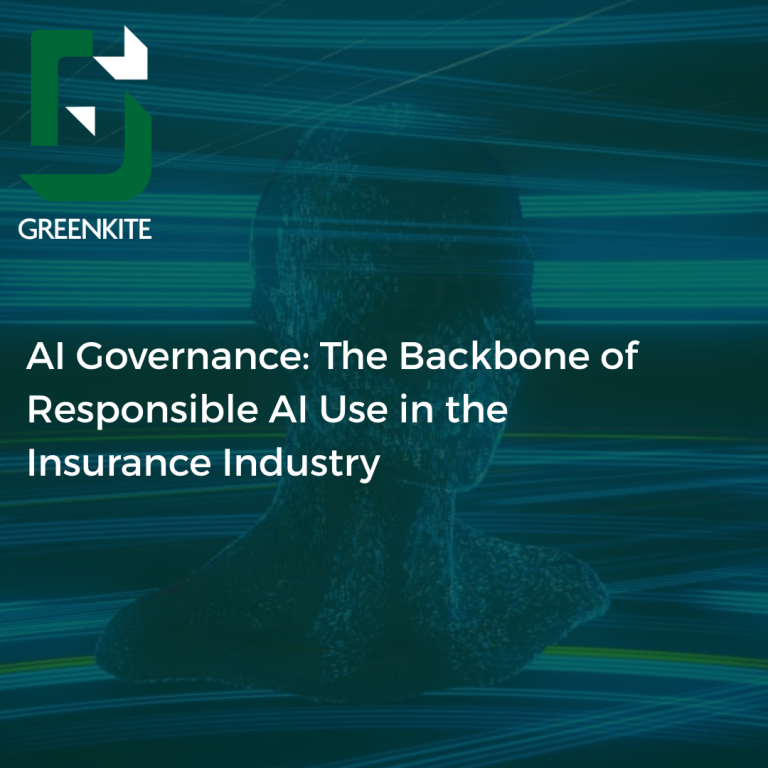
AI Governance: The Backbone of Responsible AI Use in the Insurance Industry
As the insurance industry embraces artificial intelligence (AI) to enhance efficiency, accuracy, and customer satisfaction, the importance of robust AI governance cannot be overstated. Managing General Agents (MGAs) and insurers must establish comprehensive governance frameworks to ensure that AI technologies are used responsibly, ethically, and in compliance with regulatory standards. This article delves into the critical aspects of AI governance that are essential for supporting AI use in the insurance sector.
The Necessity of AI Governance in Insurance
AI has the potential to revolutionise the insurance industry by automating underwriting, detecting fraud, and personalising customer experiences. However, without proper governance, the deployment of AI can lead to unintended consequences such as biased decision-making, lack of transparency, and regulatory non-compliance. Effective AI governance frameworks address these challenges and ensure that AI systems operate within ethical and legal boundaries.
Key Components of AI Governance
- Model Governance: Ensuring the integrity and reliability of AI models is paramount. This involves documenting the development, validation, and deployment processes of AI models. Regular audits and updates are necessary to maintain accuracy and prevent biases. Model governance also includes establishing protocols for monitoring AI performance and making adjustments as needed.
- Explainability and Transparency: AI systems must be transparent in their decision-making processes. This means providing clear documentation and communication protocols to explain how AI-driven decisions are made. Customers and regulators need to understand the rationale behind underwriting and claims decisions to build trust and ensure compliance with regulatory requirements.
- Bias Monitoring and Mitigation: AI systems can inadvertently perpetuate biases present in training data. Regular monitoring and implementation of controls to detect and correct biases are essential for maintaining fairness. This includes conducting bias audits and using diverse datasets to train AI models.
- Regulatory Compliance: Compliance with industry regulations such as GDPR, DORA, and the NAIC AI Principles is crucial. This involves ensuring data protection, obtaining necessary consents, and providing mechanisms for human intervention in automated decisions. Regulatory compliance also requires documenting AI processes and maintaining records of AI-driven decisions.
- Ethics and Fairness Framework: Establishing ethical guidelines for AI use is critical. This includes defining principles for fairness, accountability, and transparency. An ethics committee dedicated to overseeing AI practices can help ensure that AI systems align with the organisation’s values and ethical standards.
Operational Implications of AI Governance
Implementing AI governance frameworks has significant operational implications for MGAs and insurers:
- Organisational Structure and Talent: The integration of AI requires a shift in organisational structure and talent. Insurers need to invest in training and upskilling their workforce to work alongside AI. This includes hiring data scientists, AI specialists, and tech-savvy underwriters who can collaborate effectively with traditional insurance professionals. It also requires tech savvy compliance and risk management expertise to ensure AI governance is considered by design and is not just an after thought.
- Process Transformation: Workflows must be redesigned to leverage AI capabilities. Clear decision frameworks should be established to delineate the boundaries between AI-assisted and human decisions. Continuous improvement processes will ensure that AI models evolve based on outcomes and feedback. Again these decision frameworks and improvement processes need to be considered within the wider governance frameworks to ensure transparency and traceability are evident.
- Customer Experience: AI can enhance customer interactions by providing personalised experiences and faster service. Integrating AI with customer communication channels ensures seamless transitions between automated and human interactions, improving overall customer satisfaction. Regulatory considerations around consumer duty must be considered as part of this to ensure the customer is at the heart of the process and that consumer duty outcomes are achieved.
AI governance is the backbone of responsible AI use in any highly regulated industry. By establishing robust governance frameworks, MGAs and insurers can leverage AI to improve risk assessment, operational efficiency, and regulatory compliance while ensuring ethical and fair practices. As the insurance industry continues to evolve, those who prioritise AI governance alongside innovation through use of AI will be well-positioned to lead the market and deliver superior value to their customers.
Ready to enhance your AI governance to support the AI innovation in your firm? Reach out to GreenKite today and discover how our solutions can support your journey. Email us at [email protected] or visit our website for more information.





